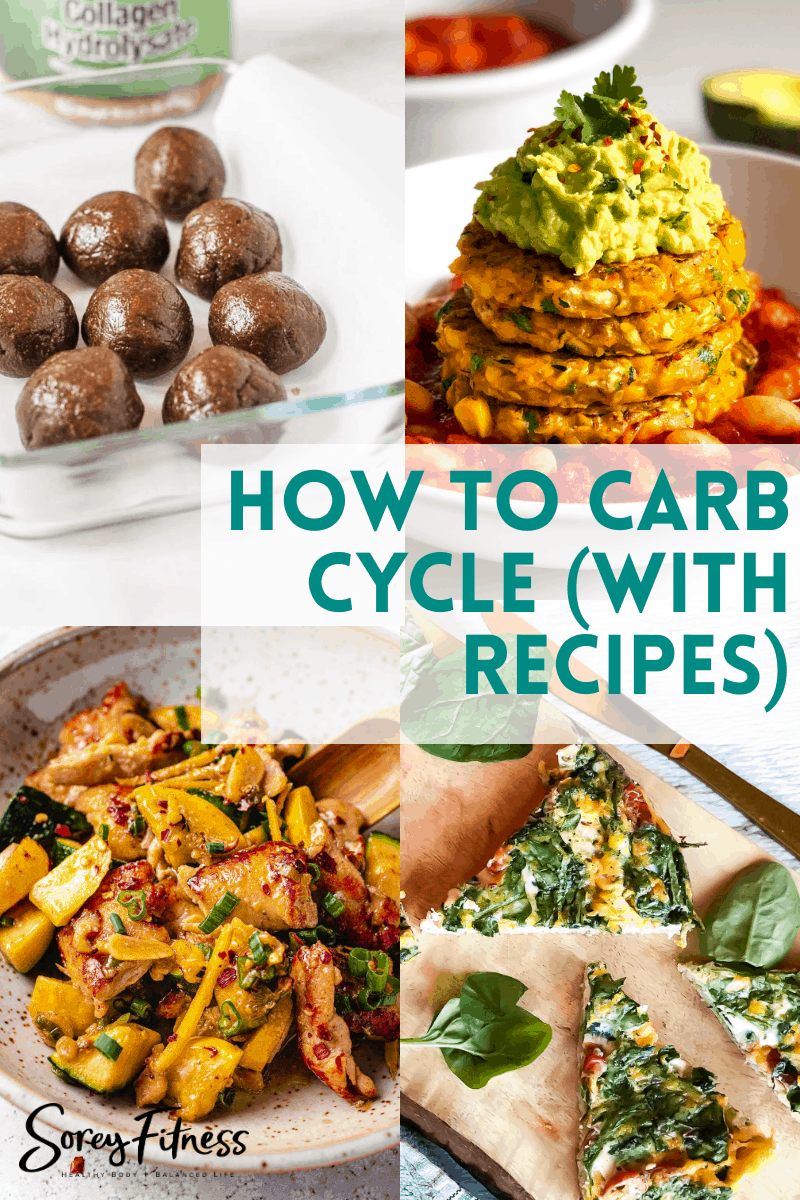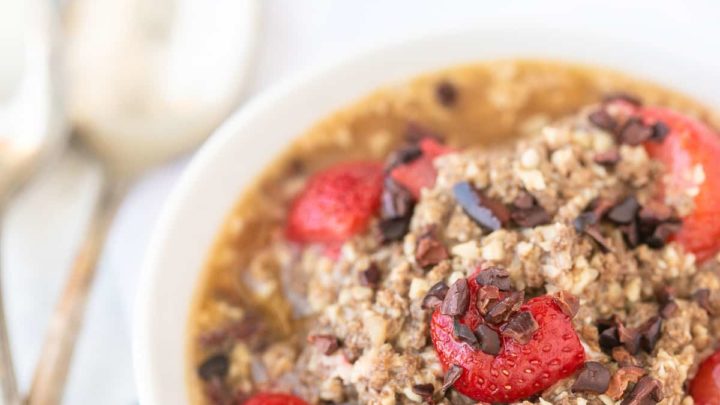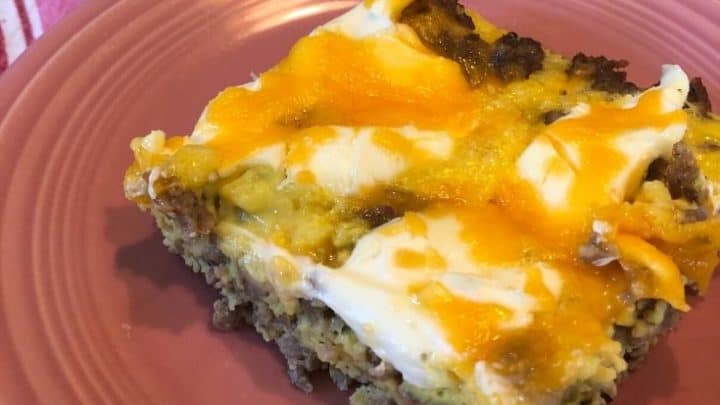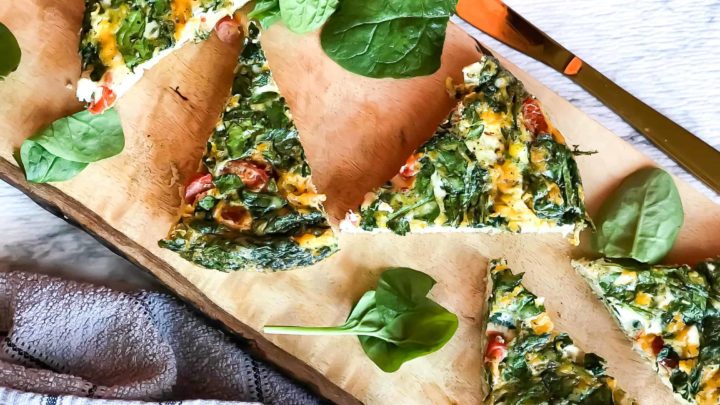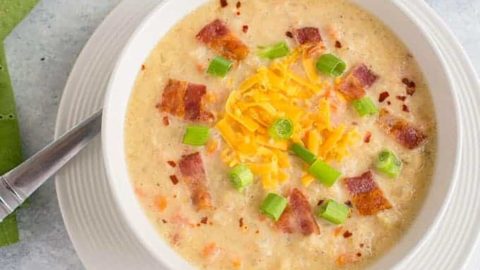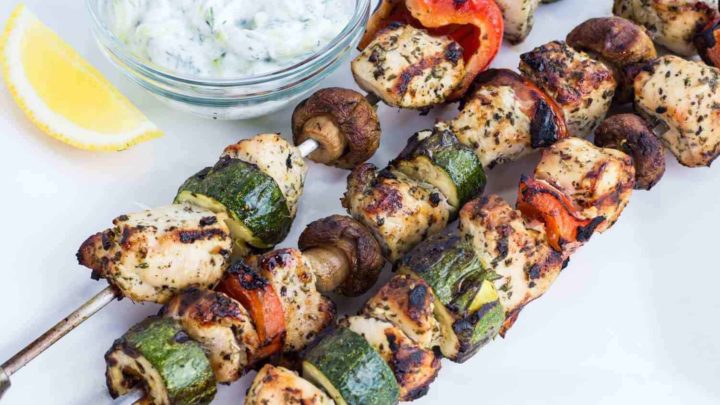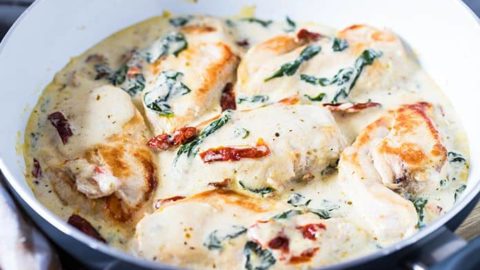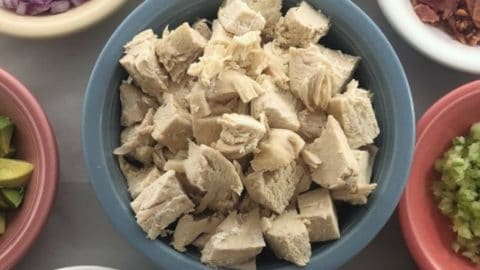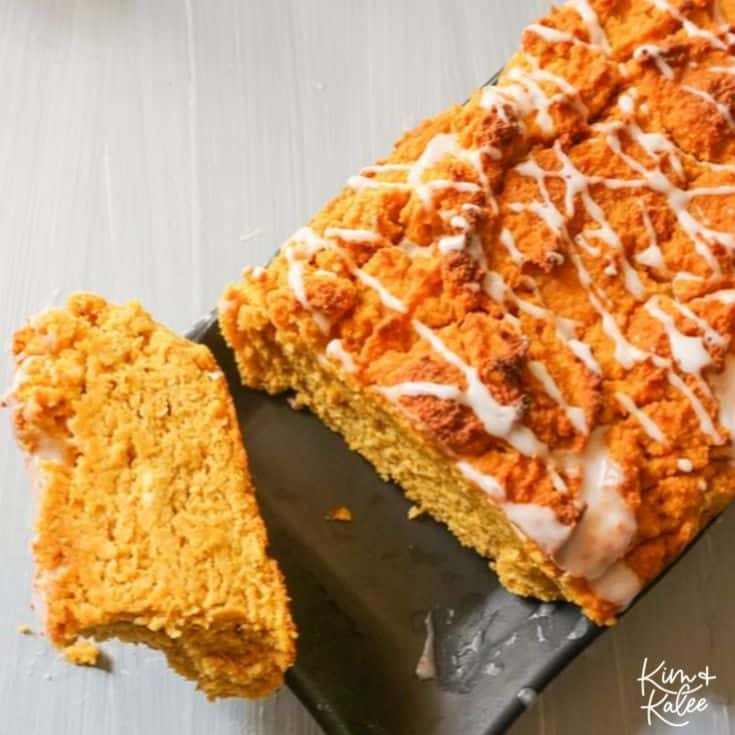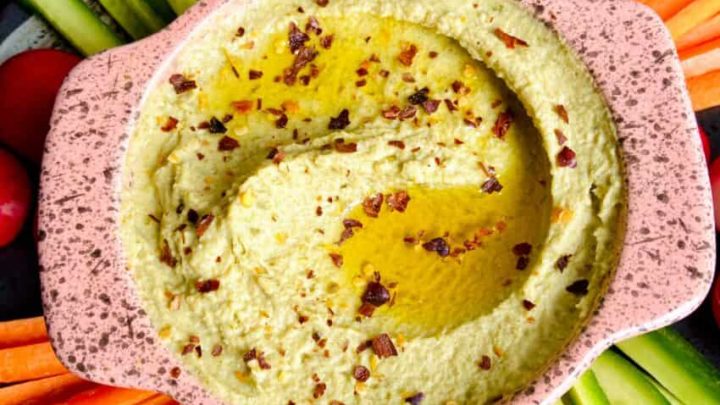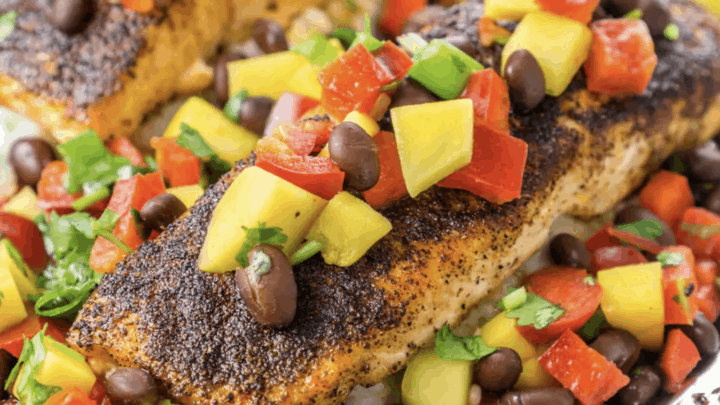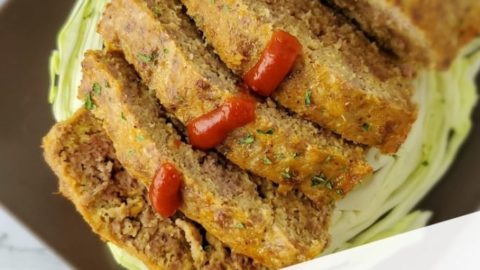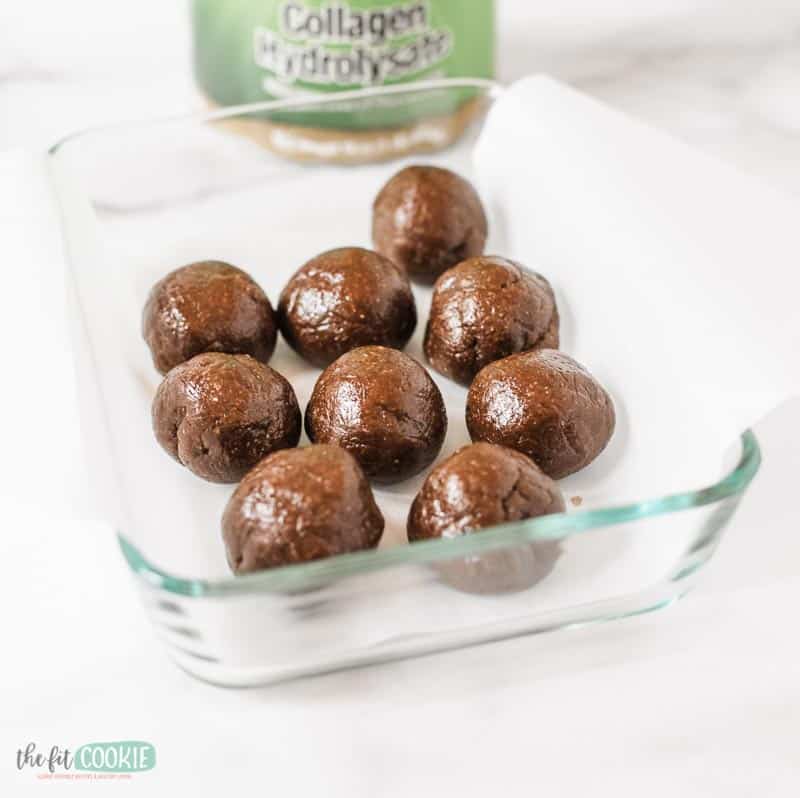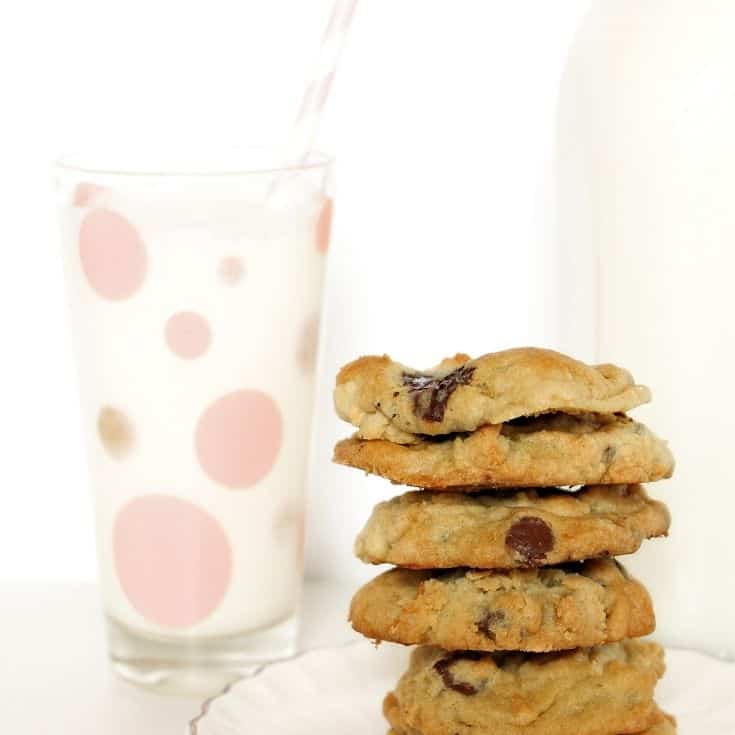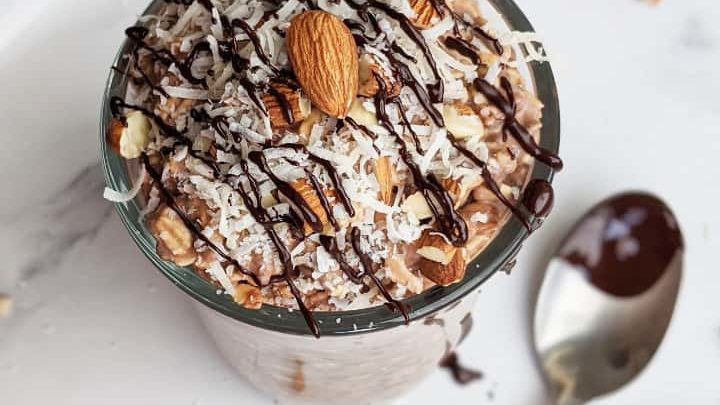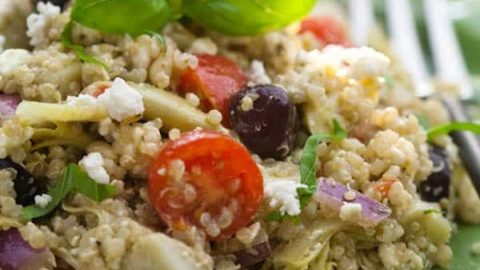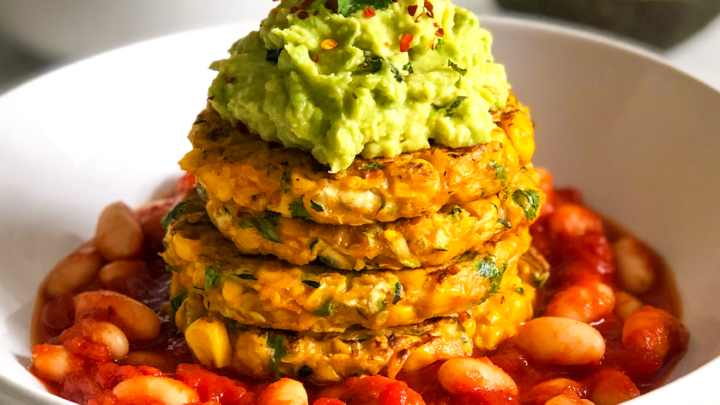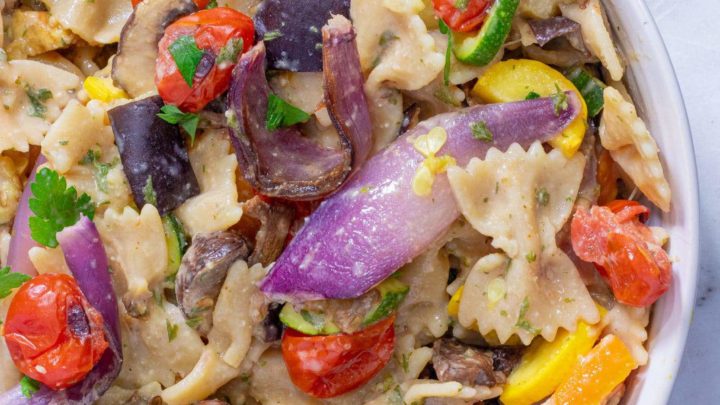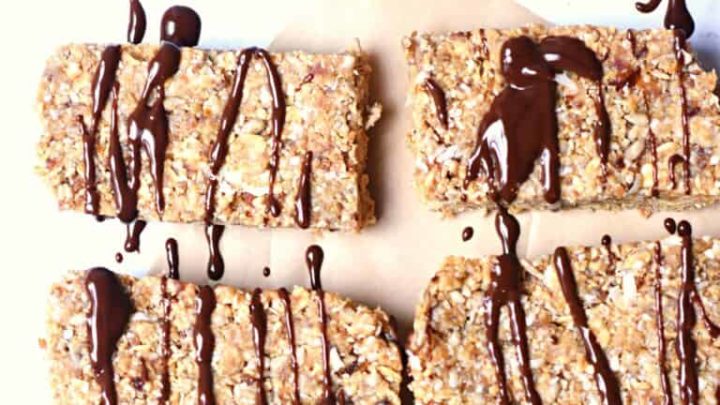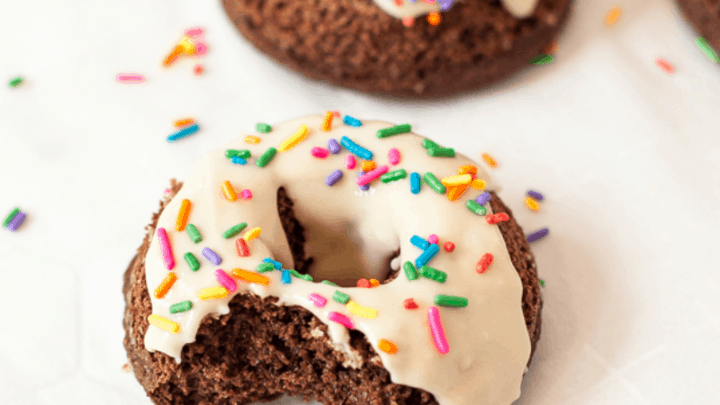How to Carb Cycle [Quick Tips, Tricks, and Recipes]
This post may contain affiliate links. All opinions shared are my own. As an Amazon Associate I earn from qualifying purchases. Click to view our full disclosure.
All content is created by humans – not AI.
Is carb cycling just a trend or a great way to lose weight in the long term? We dive into some basics of how to carb cycle, how to create your own carb cycling program, and recipes for carb cycling as well!
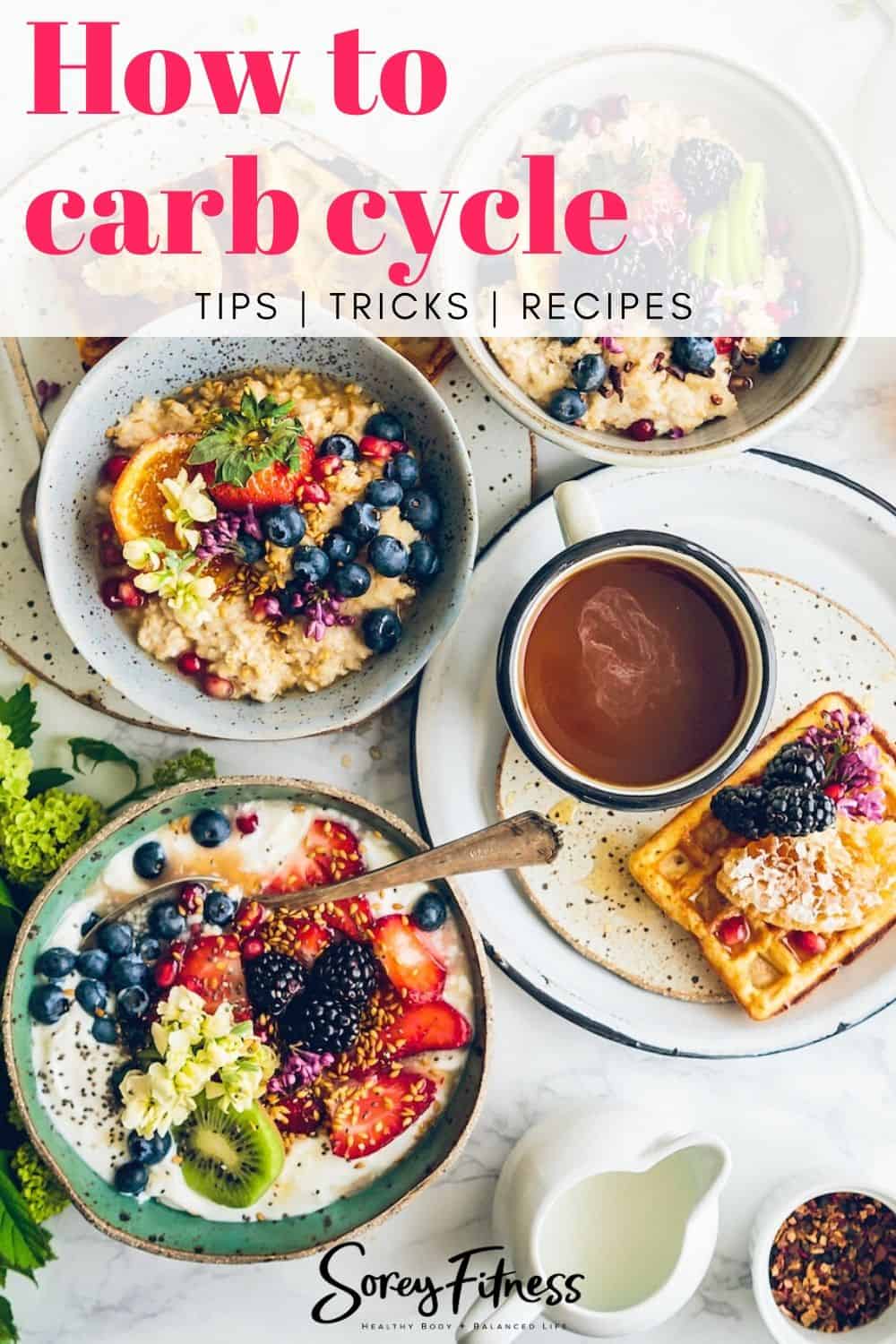
If you’re interested in dipping your toe in the water with low carb dieting but don’t want to do it full time. Or you’re an athlete who wants to lose weight but still want to refuel with carbohydrates after intense workouts, carb cycling is a viable option to vary your diet and break through weight loss plateaus.
Carb cycling is also really flexible, so it’s easier to follow if you’ve created a plan that fits your lifestyle!
We’re going to give you the details on what kinds of carb cycling diets there are and how to create your own carb cycling program that fits your unique needs.
What is carb cycling?
Simply put, carb cycling is a way to manipulate macronutrients in your diet by varying your macronutrients and carb intake each day.
Carb cycling is a great way to add some low carb days into your weekly nutrition plan to help with fat loss while still including carbohydrates into your diet on other days. You may have seen a version of carb cycling with bodybuilder diets where they eat low carb all week but have a high carb weekend refeed (or cheat day).
Some athletes adopt carb cycling to help with glucose sensitivity and fat loading for endurance events, but studies on the effectiveness of this method are mixed (source 1, source 2). So we wrote this post with a focus on overall health and weight loss vs. athletic performance.

Carb cycling programs
There are a few different types of carb cycling programs out there. There are no “standard” carb cycling programs or one-size fits all approach to carb cycling, but here’s an overview of the some carb cycling options:
- Mostly low carb plan with a few high or moderate carb “refeed” days. An example is a bodybuilder’s diet that’s 5-6 days dieting and 1 or 2 days refeed.
- An even mix of moderate, low, and high carb days.
- Carb cycling days that are set to coincide with variations in your exercise activity (low carb on rest days, high carb on high intensity days, etc.).
There aren’t standard names for carb cycling programs, so different people who sell carb cycling programs online will often add their own names to them. Like “turbo” or “extreme” carb cycling for a carb cycling program that’s heavily low carb, or a beginner/easy carb cycling program that has fewer low carb days.
If you’re creating your carb cycling program around your workouts, use this guide:
- Rest days and easy exercise days = low carb
- Moderate cardio and moderate intensity strength training = moderate carb
- High intensity cardio or weight lifting (like sprints, HIIT, metabolic conditioning, etc.) = high carb
Here is an example of how to carb cycle around your exercise program:
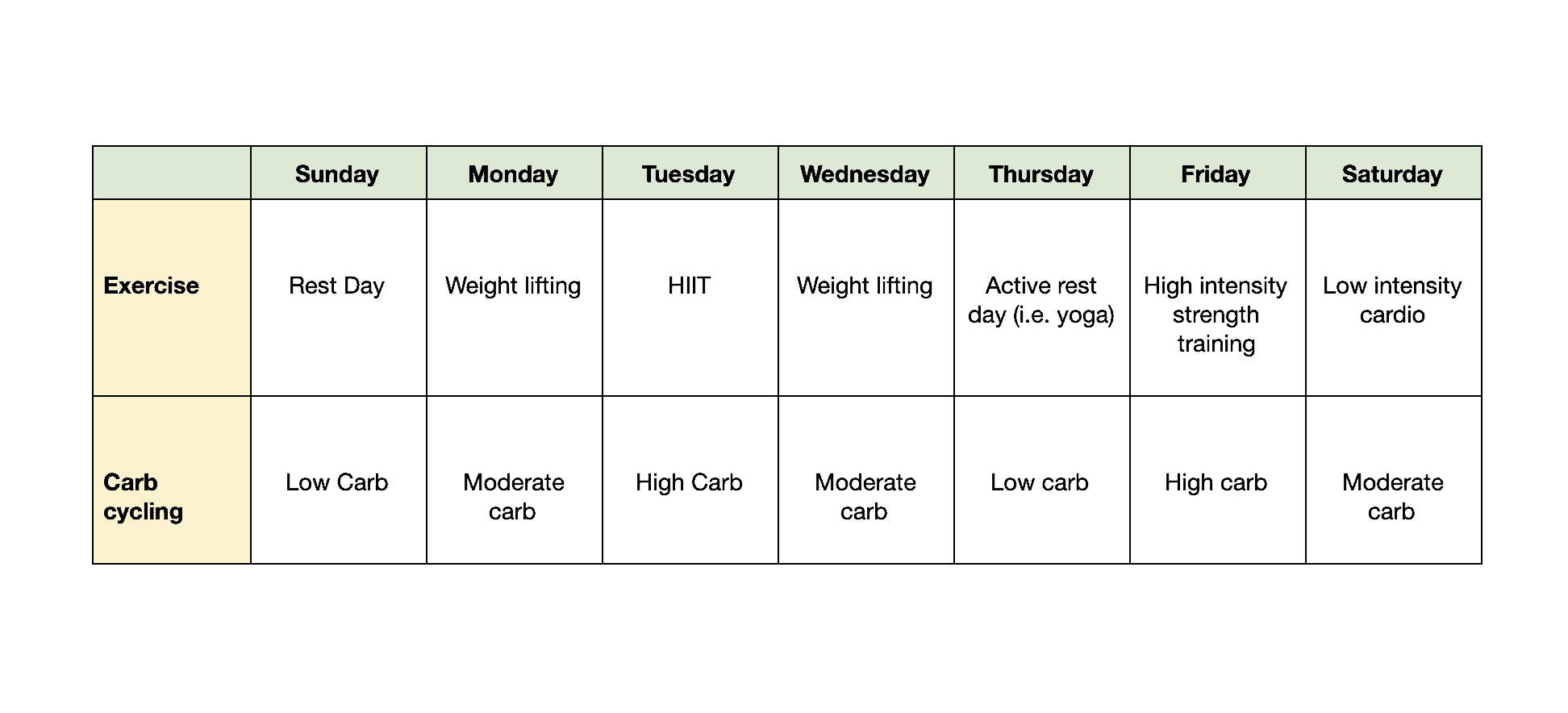
Alternatively, if you wanted to do a program that is heavier on the low carb side, you can swap a few of the moderate carb days for low carb days, just making sure that your high carb days coincide on the days (or the day after) your high intensity training sessions.
How many carbs should I be eating each day when carb cycling?
While most sample carb cycling programs have set recommendations for grams of carb intake (like a low carb day having a limit of 30 grams, etc.), I feel that it’s actually healthier to calculate your carbohydrates for each day based on your individual nutrient needs.
Since everyone’s calorie and macronutrient needs vary based on weight, height, activity level, etc. making sure your plan fits your unique needs is important.
ACE Fitness has a great calorie estimate calculator that can help you determine your calorie needs. Once you have figured out your calorie needs and created the deficit needed for weight loss (more on that farther down), then you’ll calculate your carb amounts for each day using the percentages below:
- High carb: 60-80% of calories
- Moderate Carb: 30-60%
- Low Carb: 0-30%
Once you’ve decided which percentages you’d like to use, you’ll then calculate how those percentages translate into grams depending on your daily calorie goals.
We explain how to do this in our meal prep post.
How to Carb Cycle
How to choose which type of program will work for me
The carb cycling program you choose and the amount of carbohydrates for each carb cycling day will depend on your specific activity needs.
If your workouts are mostly lower intensity, you can do more low carb days in your plan. If you do a lot of high intensity workouts, stick with a plan that has fewer low carb days and a bit more moderate or higher carb days.
The amount of carbohydrates for each carb cycle day will also depend on your personal preferences. I don’t feel well when I eat low carb, so a low carb day for me might have a slightly higher percentage of carbohydrates than someone else who is more accustomed to eating lower carbs.
When you decide on a plan and have it written down, make sure you take the time to meal prep!
And don’t forget this is not written in stone: you can always make adjustments as needed as you go through your carb cycling program.
Counting carbs vs. not counting carbs
There are a couple different ways that you can go about carb cycling once you have decided how you’d like to set up your carb cycling program: you can use a nutrition tracking app to keep track of everything you eat and check the macronutrients for each day, or you can just estimate what you’re eating by mentally tracking portions of carbs rather than counting calories and grams.
Whichever tracking method you decide to use will depend on your goals and your personality.
Don’t have time to track everything you eat in an app? Moderate your meals and carb intake by using your hands for portion measuring.
If you’re fine tuning your weight loss and don’t mind tracking your calories and macronutrients, you can get more precise and track everything you eat in an app to keep yourself accountable.
Is carb cycling good for weight loss?
Most people who do carb cycling are adopting this eating pattern to lose weight. So is carb cycling good for weight loss?
It can be if you keep a few things in mind!
For weight loss, you’ll still want to make sure that you’re creating a moderate calorie deficit in your eating plan while carb cycling. A moderate calorie deficit is 10-15% of what your estimated base metabolic rate is.
So if you need 2200 calories to maintain your current weight, you can create a deficit of 220 (10%) to 330 (15%) calories from your diet for moderate weight loss. If you’re exercising, you’ll also create a calorie deficit through exercise as well in addition to the calorie deficit in your diet.
Whether you’re doing a high carb day or a low carb day, you’ll also want to make sure that you’re still eating plenty of protein. Protein intake seems to have more of an impact on weight loss and body composition than fat intake on low carb diets.
You’ll also want to make sure that you’re eating mostly whole foods that naturally have plenty of fiber, protein, vitamins, and minerals. Shakes and bars are alright as a supplement to your diet, but should not make up the bulk of your diet.
One of the biggest determining factors in whether carb cycling (or any diet plan) will help with weight loss is whether you’re able to maintain the diet changes and it’s not too extreme.
The great thing about carb cycling is that it’s flexible to fit your needs, so you can make this concept work for you in the long term if you choose to continue doing this type of eating plan.
What carbohydrates are best for carb cycling?
So you might be wondering what kind of carbs are best for those days where you need to eat high and moderate amounts of carbohydrates.
Focus on the carbohydrates that are whole-food and high in fiber. Here are a few good carbohydrate options to choose from:
- Brown rice
- Quinoa
- Buckwheat
- Whole oats
- Whole barley, rye, or wheat if you can have gluten
- Sweet potatoes (with the skin)
- White potatoes (with the skin)
- Sprouted 100% whole grain breads
- Fruits and vegetables
- Beans and legumes
Avoid sugary foods and high-glycemic processed foods that spike blood glucose levels. For low carb days, stick with non-starchy vegetables like greens, broccoli, cauliflower, green beans, etc.
If you’re in a rush, you may also like our tips of meal prepping or our grab and low low carb breakfast ideas.
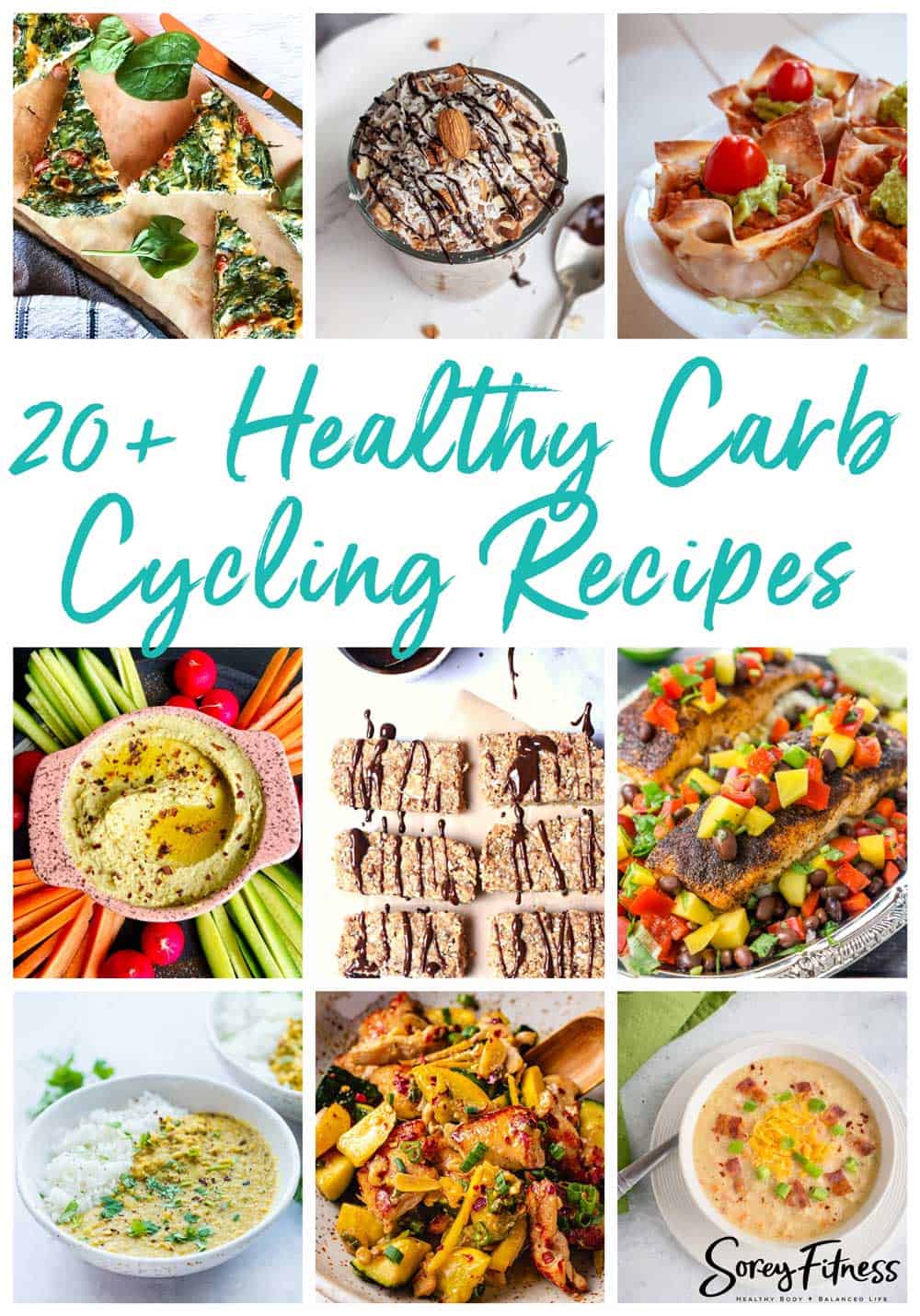
Carb cycling recipes
Ready to start carb cycling? Here are over 20 recipes for your high, moderate, and low carb days to get you started.
Carb Cycling Recipes
Here are some recipes for your carb cycling menu, divided by high carb, moderate carb, and low carb categories.
Low Carb Recipes
Low-Carb Chocolate Cauliflower “Noatmeal” Oatmeal
This Chocolate Cauliflower “Noatmeal” Oatmeal recipe is a low carb and grain-free breakfast porridge that is perfect for paleo and keto diets.
2 Minute Keto English Muffin Recipe | Microwave Option
Craving bread? This 2-Minute Keto English Muffin Recipe is low carb, gluten-free, and satisfies serious bread cravings! They're crunchy on the outside and soft and buttery on the inside, and they're so simple to make!
Keto Breakfast Casserole - Low Carb & Super Easy Make Ahead Recipe
Our Keto Breakfast Casserole is super easy to make ahead of time or pop in the oven anytime! You’ll love the mix of ground sausage, cheese, eggs, and jalapeños! Plus, it’s low carb and bakes in just 30 minutes!
Spinach, Tomato, and Cheddar Frittata
This gorgeous, easy and delicious frittata is sure to be a hit at any breakfast or brunch. Featuring fresh spinach, bright, flavorful cherry tomatoes, and freshly grated cheddar, it's a keto-friendly, low-carb dish that can be enjoyed time and time again. A true classic.
Scrambled Egg Cups (Meal Prep)
Make your busy weekday mornings a bit easier with these Gluten Free Meal Prep Scrambled Egg Cups (aka microwave omelets). Just spend a few minutes ahead of time prepping veggies to set up 3-4 days of gluten free, dairy free, and low carb breakfasts.
Slow Cooker Cauliflower Cheese Soup
This Slow Cooker Cauliflower-Cheese Soup is so delicious and comforting! Serve it with toppings such as bacon and chives for a loaded cauliflower soup that'll knock your socks off! Plus, it's gluten free and has just 15 grams of carbs per serving.
Lemon Oregano Chicken Kabobs
Perfect for grill season, these colorful and oh-so tasty kabobs are a show-stopping meal!
Creamy Tuscan Chicken
This Tuscan Garlic Chicken recipe is the best one-pan recipe that’s filled with a creamy garlic sauce, spinach, dried tomatoes, and herbs. Ready in less than 30 minutes, this flavorful Tuscan chicken it’s low carb, keto-friendly and a family favorite.
Paleo Turkey Meatballs Recipe (Easy and Gluten Free!)
Our gluten-free paleo turkey meatballs are moist, tender, and delicious! Plus they’re easy to make and ready in just 10 minutes! Making them a great low carb snack or dinner recipe!
Easy Keto Chicken Salad Recipe | Low Carb with Bacon & Cream Cheese
This easy keto chicken salad provides lean protein, healthy fat, and tons of flavor to help you stay low carb! It’s also so simple to make and tastes great on its own, in a wrap, or with vegetables.
Keto Pimento Cheese Recipe – Low Carb, Gluten Free & Ketogenic Snack Ideas
This keto pimento cheese dip is a Southern classic. You'll love how savory this snack is because of the cheddar cheese, pimentos, jalapeños and cream cheese.
Keto Air Fryer Chicken Parmesan for 2
This easy low carb and keto Air Fryer Chicken Parmesan recipe is ready in just under 20 minutes making it the perfect weeknight dinner! We love that it’s healthy, delicious, and the perfect mixture of crispy and juicy!
Keto Pumpkin Bread with Coconut Flour
Our gluten-free keto pumpkin bread is sweet and so moist! We used both almond flour and coconut flour for this recipe, and it's so yummy, fluffy, and moist!
Keto Chicken Tortilla Soup (Instant Pot)
This Keto Chicken Tortilla Soup is made in the Instant Pot, is gluten free, and can easily be made dairy free as well. It's perfect for your whole family, too, even if they don't follow a low carb diet!
Moderate Carb Recipes
Green Split Pea Hummus
This easy split pea hummus recipe is a delicious, creamy alternative to a classic hummus. With dried green peas as the base, it's cheap to make, filled with nutrition and addictive to eat!
Loaded Chicken Burrito Bites
Chicken Burrito "Cupcakes" are a delicious and healthy way to enjoy burritos! The greek yogurt makes them extremely creamy and filling. The is the ultimate perfectly portioned grab and go lunch!
Blackened Salmon with Mango Black Bean Relish
A quick and easy, flavorful recipe. Delicious blackened salmon topped with a fruity, flavorful juicy salsa made with fresh mango and black beans.
Lentil Dahl Recipe
Simple and delicious lentil dhal made with just a few pantry ingredients. It is healthy and packed with plant-based protein.
Ginger Chicken with Summer Squash
Easy Ginger Chicken Stir-Fry Recipe with summer squash, tossed in an irresistibly delicious sweet and tangy rice vinegar and ginger garlic sauce. This dish is super simple and I promise you’ll like it more than the restaurant version!
Keto Meatloaf Recipe
This delicious low carb, keto meatloaf recipe is the perfect comfort food and so easy to make! It's tender, juicy, and delicious, and it only takes 8 ingredients and 5 minutes to prep! Plus, it's budget-friendly, family-friendly, and loaded with flavor
Fudgy Brownie Protein Bites (Paleo)
Add more protein to your snack with these yummy Fudgy Brownie Protein Bites! They are gluten free, dairy free, peanut free, and paleo
11 Best Low Carb Protein Cookies
If you're looking for a cookie that won't blow your carbs for the day, we've found the best recipes and store-bought brands!
High Carb Recipes
Keto Cinnamon Rolls with Cream Cheese Frosting
These soft and gooey are quick and easy to make! You can prep this delicious low carb breakfast treat in just under 10 minutes! Plus, each serving has only 17 grams of net carbs!
Blueberry Oatmeal Yogurt Pancakes
These is our FAVORITE pancake recipe ever! These Blueberry Oat Greek Yogurt Pancakes are so tasty, light and fluffy, and bursting with juicy blueberries.
Vegan Almond Joy Overnight Oats
Your favorite candy bar turned into a healthy and delicious breakfast! Made with mostly whole food ingredients to recreate the delicious combination of coconut, almonds and chocolate that make up Almond Joys. Make your morning more joyful!
Mediterranean Quinoa Salad
Mediterranean quinoa salad is a wonderfully healthy side dish or meatless main meal. Tender quinoa is tossed with fresh basil pesto, artichokes, Kalamata olives, and cherry tomatoes. Filling and flavorful!
Sweet Corn and Zucchini Fritters
This recipe is perfect for any meal and comes with the edition of a killer cannellini bean recipe to round out the whole dish! We’ll let the picture below do the talking, I mean how good does this look!? Let’s get to the cooking!
Vegan Sheet Pan Roasted Vegetable Pasta
This roasted vegetable pasta is prepared with only a pot of water and a sheet pan in the oven. It comes together in just 30 minutes and is super cozy yet light and refreshing. A light lemon miso tahini dressing makes everything super delicious, especially when paired with the perfectly caramelized vegetables.
Easy Raw Protein Granola Bars
These Raw protein bars are easy to make and packed full of sunflower seeds, oats, coconut and peanut butter!
Chocolate Protein Donuts (Sugar Free, Low Carb)
Enjoy some delicious glazed chocolate donuts without breaking your diet! Our chocolate protein donuts only look sinful, they're made with healthy ingredients, are high in protein, and are dairy free and soy free!
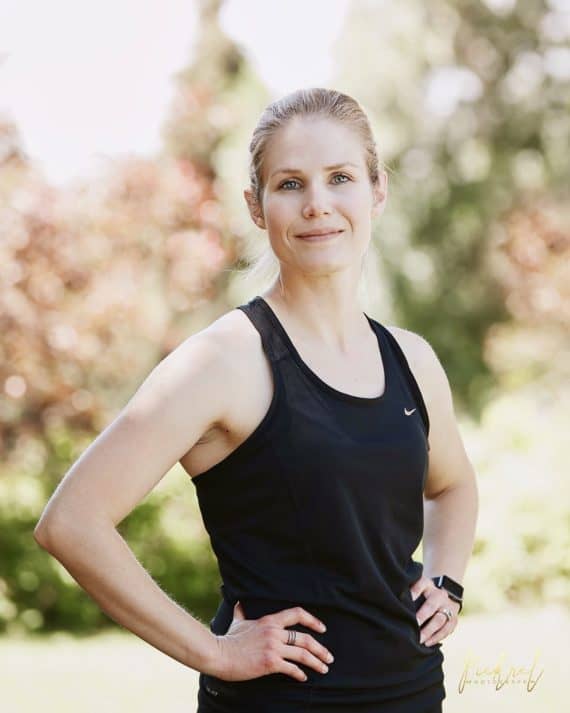
Sarah Jane Parker is a food and healthy living blogger at The Fit Cookie, an ACSM Certified Personal Trainer, ACE Certified Health Coach, Revolution Running certified running coach, YogaFit Level 1 certified yoga instructor, and an ACE Certified Fitness Nutrition Specialist.

